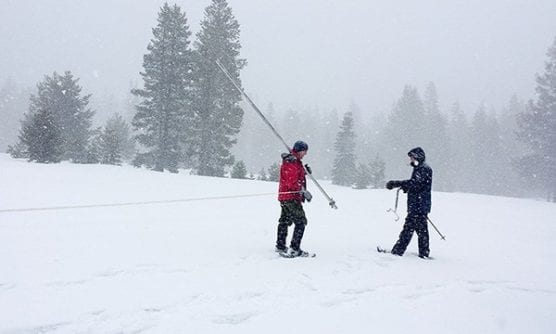Local water heads sitting pretty on the heels of a rainy winter and news of a snowpack so deep in the Sierra Nevada it still hasn’t melted got a crash course on preparing for times not so wet and lush.
Members of the Santa Clarita Valley Water Agency board were briefed April 30 on new conservation strategies, examining what programs proved successful and exploring new ideas moving forward.
Basically, they decided to keep the programs that worked — such as rebates — and move forward with better and smarter ways of water management.
“How we achieve conservation is through planning and management, operational smart practices, pricing and rate structures, education and training, outreach and engagement and, of course, water use efficiency,” said Matthew S. Dickens, the agency’s resource conservation manager.
“All of those practices achieve conservation,” he said.
A dozen years ago, the SCV’s family of water providers — before the SCV Water Agency was formed last year — came up with a strategic plan to conserve water.
The plan was to deliver a basket of goodies to ratepayers in the form of rebates for water-saving devices. Among the most popular of the incentives were the low-flush toilet rebates.
Rebates for water savers
SCV’s water wholesaler at the time — Castaic Lake Water Agency — offered toilet rebates, and so did water retailer Newhall County Water District.
Other incentives offered in the 2007 strategic plan were making smart controllers for sprinklers available and giving out rebates for water-efficient clothes washers.
When they launched the first conservation strategy in 2007, water officials were pleasantly surprised to find a rush for a better flush when they sold out of ultra-low-flush toilet rebate vouchers.
Dan Masnada, then-general manager of SCV Water’s predecessor — the CLWA — said at the time: “The good thing is that it looks like the trend to conserve water is higher than we anticipated.”
That sort of community disposition lends itself to effective education and training about conservation, Dickens said, comparing former strategies with emerging ones.
The 2007 incentives were aimed at conserving water by 10% over 20 years.
The recent statewide drought from 2013 to 2015 provoked water planners to set a new goal — reducing water use 20% by 2020.
The revised conservation strategy still includes rebates.
SCV Water still offers rebates for the installation of smart controllers for sprinklers, rebates for lawn replacement, rebates for swimming pool covers to stop the evaporation of water and for soil moisture sensors.
Conservation education
But, while the rebates have proven attractive, practical and successful, the real gains to be made in water conservation are expected to be delivered through stepped-up education about conservation.
The agency’s new conservation strategy adopted the goal of supporting the community’s water conservation goals with the overriding goal to achieve a 20% reduction in the amount of water used by 2020.
Specifically, the goal means using 20% less water than was used in 2013.
The agency’s vision moving forward is to use water more efficiently and smarter by educating ratepayers.
Rebates are still offered as they were in 2007 — minus toilet rebates — with the understanding that the program would now be augmented with better planning and management.
Dickens summed up the agency’s vision, saying: “SCV Water envisions community-wide incorporation of sustainability practices, which promote and facilitate our high quality of life, strong economic activity, in tandem with our commitment to excellence in water management and resource stewardship.”
Relaxed conservation
During the drought, former Gov. Jerry Brown enforced conservation mandates by demanding all water agencies file monthly water usage figures.
With the drought lifted, an abundance of rain and a healthy snowpack, the “outreach” push for conservation has been relaxed.
Last week, the Department of Water Resources reported finding a snow depth of 47 inches and a snow-water equivalent of 27.5 inches, which is 188% of the average for the location tested.
Snow-water equivalent is the depth of water that theoretically would result if the entire snowpack melted instantaneously. The melted snow supplies approximately one-third of the water used by Californians.
Like this:
Like Loading...
Related





 Tweet This
Tweet This Facebook
Facebook Digg This
Digg This Bookmark
Bookmark Stumble
Stumble RSS
RSS


























REAL NAMES ONLY: All posters must use their real individual or business name. This applies equally to Twitter account holders who use a nickname.
0 Comments
You can be the first one to leave a comment.